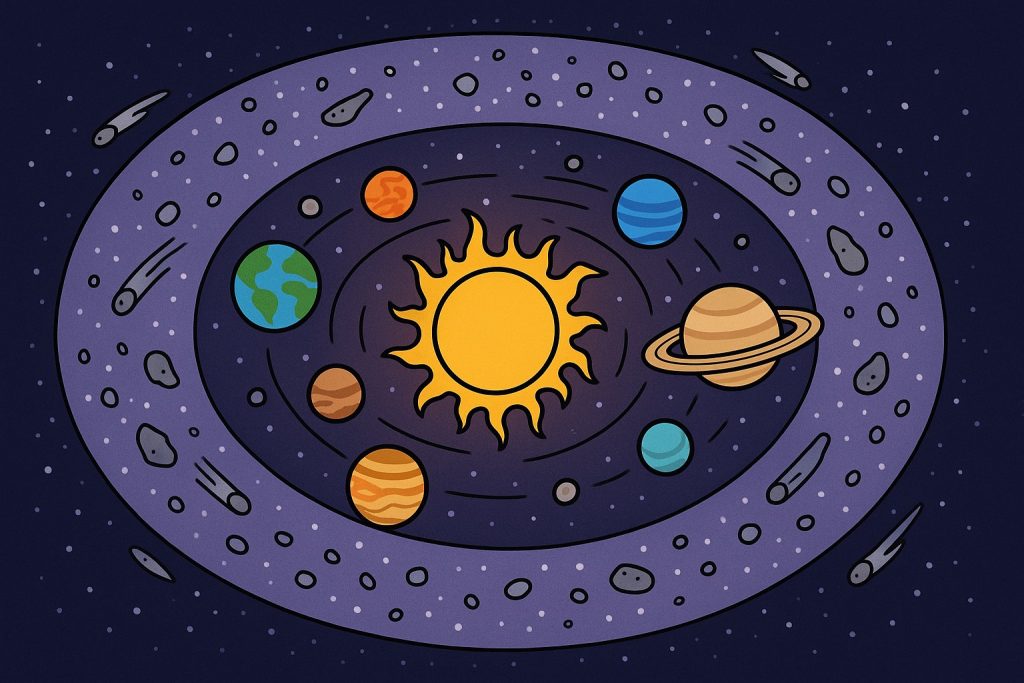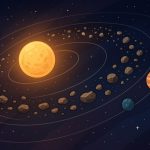Far beyond the orbit of Pluto, past the Kuiper Belt and the known planets, lies a hypothetical and invisible region believed to be the outermost boundary of our solar system — the Oort Cloud. This distant shell of icy objects is thought to contain the primordial building blocks of the early solar system and may hold the origin of many comets that visit the inner planets.
What Is the Oort Cloud?
The Oort Cloud is a theoretical, spherical shell of icy bodies that surrounds the solar system at an enormous distance — from about 2,000 to 100,000 astronomical units (AU) from the Sun. For comparison, Pluto orbits at about 40 AU.
Although we’ve never directly observed the Oort Cloud, astronomers are confident of its existence based on the long-period comets that occasionally appear from extreme distances and strange angles.
Discovery and Theory
The idea was first proposed in 1950 by Dutch astronomer Jan Oort, who noticed that many comets had orbits that didn’t fit the structure of the inner solar system. He theorized they originated from a distant, icy cloud that encircled the solar system.
Unlike the Kuiper Belt, which is a flat disk, the Oort Cloud is believed to be spherical, forming a sort of icy cocoon around the Sun and all the planets.
What Is It Made Of?
The Oort Cloud likely contains:
- Icy planetesimals — leftovers from the early solar system
- Frozen water, methane, ammonia, and carbon dioxide
- Comet nuclei, ranging in size from a few kilometers to possibly hundreds
These objects are so far from the Sun that they are frozen solid, and only disturbed by gravitational tugs from nearby stars or galactic forces.
Why Is the Oort Cloud Important?
- Origin of Comets: Many long-period comets, with orbits longer than 200 years, are believed to come from the Oort Cloud.
- Solar System History: The Oort Cloud may preserve pristine material from the early days of planet formation.
- Galactic Interaction: It marks the edge of the Sun’s gravitational influence — a transition to interstellar space.
Some scientists even speculate that interstellar objects could exist there, captured during the solar system’s formation.
Will We Ever Visit It?
Because it is so distant and its objects are so spread out, visiting the Oort Cloud is not currently feasible. The farthest human-made object, Voyager 1, has not even reached the inner edge. A probe would take thousands of years to arrive.
Glossary
- Oort Cloud — A theoretical shell of icy bodies at the edge of the solar system, believed to be the source of long-period comets.
- Astronomical Unit (AU) — The distance between the Earth and the Sun, about 150 million kilometers.
- Long-period comet — A comet that takes more than 200 years to orbit the Sun.
- Kuiper Belt — A region of icy bodies beyond Neptune, flatter and closer than the Oort Cloud.
- Planetesimal — A small object formed in the early solar system that could become part of a planet.
- Interstellar space — The region between star systems, outside the influence of any one star.


